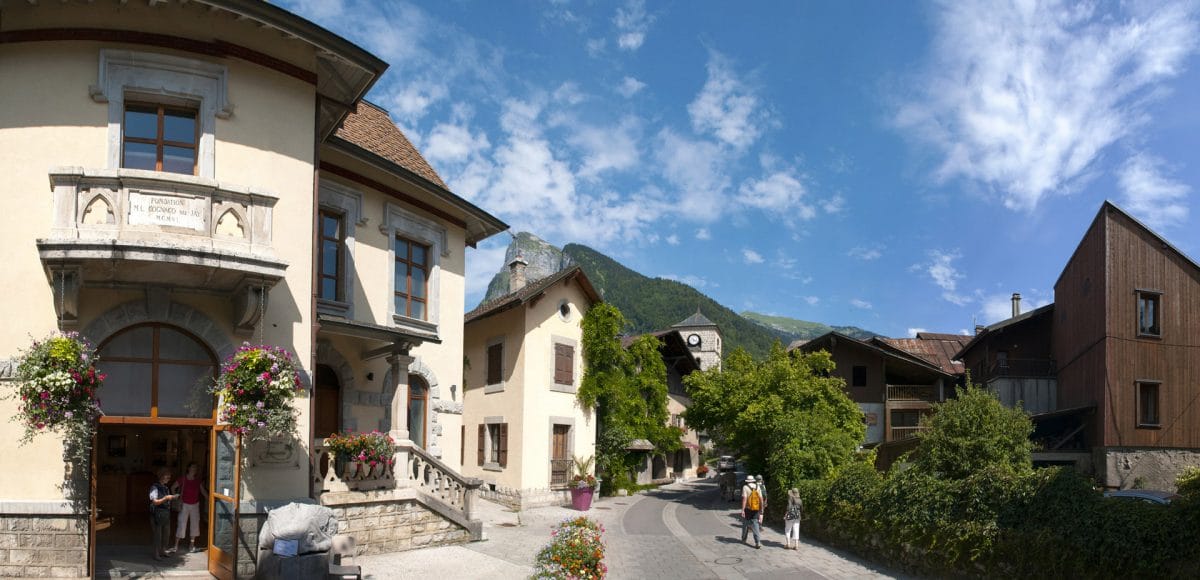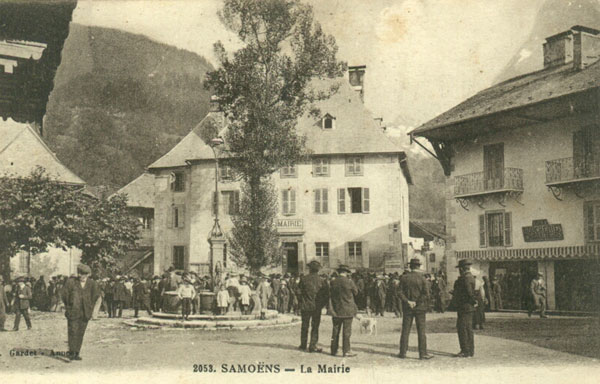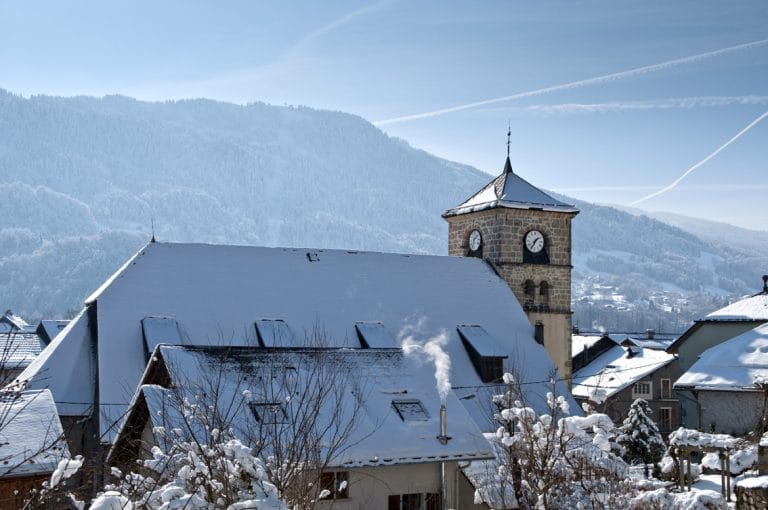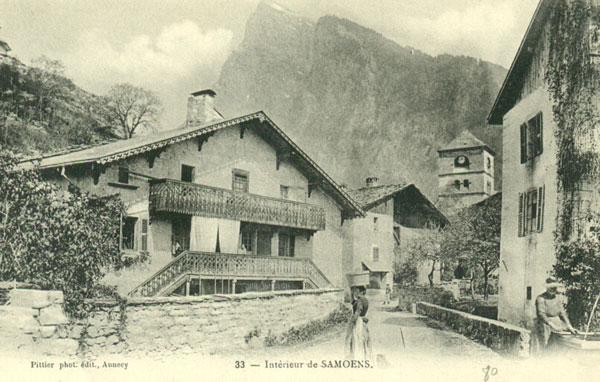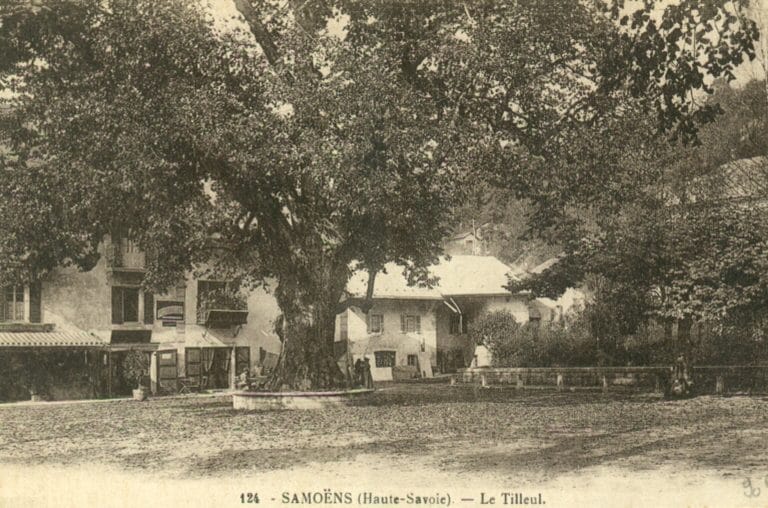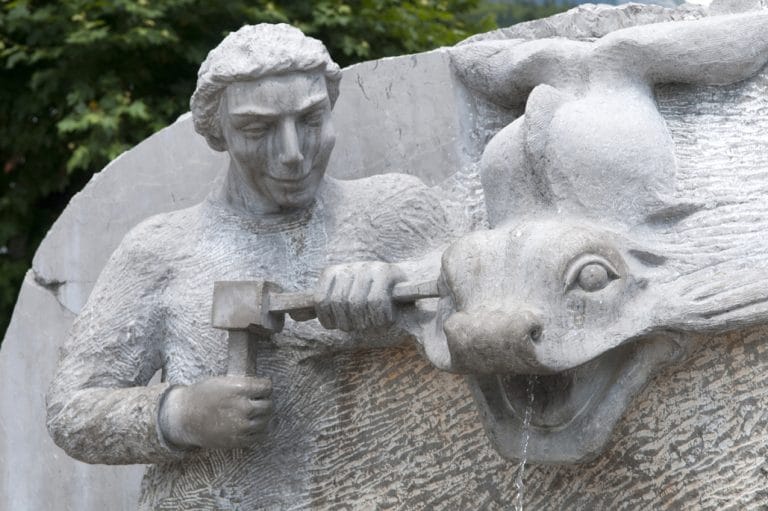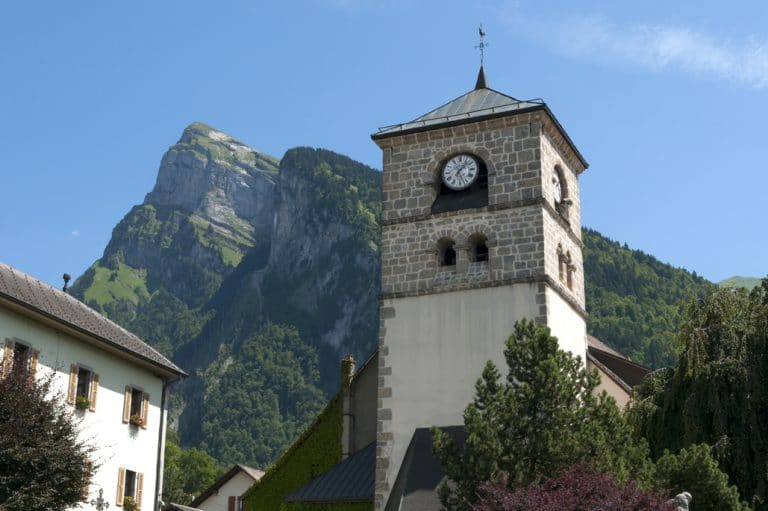Natural historical monument and emblem of Samoëns
A center symbolized by a natural historical monument, the Gros Tilleul. It was planted in 1438 in the center of Samoens to celebrate a judgment rendered by Duke Amedee VIII of Savoy. A judgment confirming to the Septimontains the possession of several mountain pastures located in the valley near the Channel. This tree now reaches 9.50 meters of trunk tower for a height of 20 meters. He is witness to nearly six centuries of history and has become the emblem of the village. Its reputation has largely crossed the boundaries of the town, as well as stonemasons.
Heritage of eternity, Septimontan funerary art
The funerary art in Samoens is visible in front of the parish house and in the communal cemetery. It reflects the know-how of the old masons and stonemasons of the Giffre valley in Haute-Savoie.
Art lovers, passionates about sculpture and symbolism, we have concocted this visit exclusively for you! The septimontain cemetery illustrates the talent of a fraction of stonecutters: the sculptors. Their works are visible in the cemetery: columns, statues or even stone vaults. In the nineteenth century, many funerary monuments were commissioned from local sculptors. They were notably to François-Marie Mugnier (1825-1900), a specialist in the production of funerary steles.
















